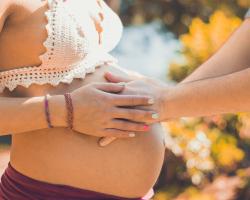An unnaturally protruding head or shoulders, protruding belly, hollow chest, unsymmetrical arrangement of the pelvis or shoulders – these are some of the symptoms of a child’s faulty posture.
Orthopedic defects include acquired defects and pathologies present in the child from birth. They are referred to as congenital, although Dr. Tomasz Poboży, an orthopedic surgeon at the Medicover Hospital, stresses in his interview for e-zdrowie, that they are not always the product of defective genes.
Congenital defects
Congenital defects usually manifest right after birth or in early infancy. They include congenital torticollis, high scapula or irregular number of fingers, complex defects which are more than just orthopedic issues, e.g. split spine, as well as pathologies, where the orthopedic problems are secondary to other serious diseases, such as cerebral palsy.
“In this case, they also include dysplasia or congenital hip dislocation, but this is one of the situations, where the genes are not the only factor, therefore it would be more correct to discuss a developmental than congenital hip dysplasia," stresses Dr. Poboży.
He notes that certain congenital defects do not necessarily have to be visible right after birth – e.g. brittle bone disease.
Acquired defects
Acquired pathologies are usually connected with faulty postures and deformations of the skeletal system caused by nourishment deficiencies (e.g. rickets due to a deficiency of vitamin D3) or hormonal disorders, as well as lesions caused by other diseases (e.g. kidney diseases).
The defects may occur at different ages.
“Some of them, such as flatfoot, knee axis disorders, may be treated as normal at a certain age and up to a certain point of intensification, the child usually grows out of them," says Dr. Poboży.
What should be the point of attention?
The factors deserving attention are deviations from what is considered normal: excessive backward or forward spinal curve, unnatural forward protrusion of the head or shoulders, protruding scapulas, forward protrusion of the belly, or a rounded, flat or hollow chest. These symptoms may be associated with deformation of the spine in the sagittal plane.
In scoliosis, the noteworthy factors are the unsymmetrical positioning of the pelvis, shoulder blades, shoulders, nipples, and the so-called rib hump. In some cases, the length of the limbs may appear different.
“Certain defects may result from causes, which, when diagnosed and eliminated at an early stage, may prevent the deformation from intensifying and help avoid further complications. The complications may spread over more than just the motor system, e.g. flatfoot coexisting with crooked heel may cause chronic foot pain at a later age," the doctor cautions.
Parents are often alarmed by the way their children “place feet inwards". Dr. Poboży explains this is rarely a symptom of a severe pathology, but merely results from a habit.
What contributes to a faulty posture?
Posture defects can be contributed to by factors such as inadequate footwear, sitting for long periods or on an inadequate chair, sleeping on an uneven and sinking mattress, and carrying a backpack on one shoulder.
Poboży reminds that the height of the chair and the length of the seat should allow the thigh to be supported by the seat, and the entire foot to touch the floor.
If possible, the chair should have forearm rests and the bed mattress should be hard enough (e.g. made of coconut fiber).









Comments (0)